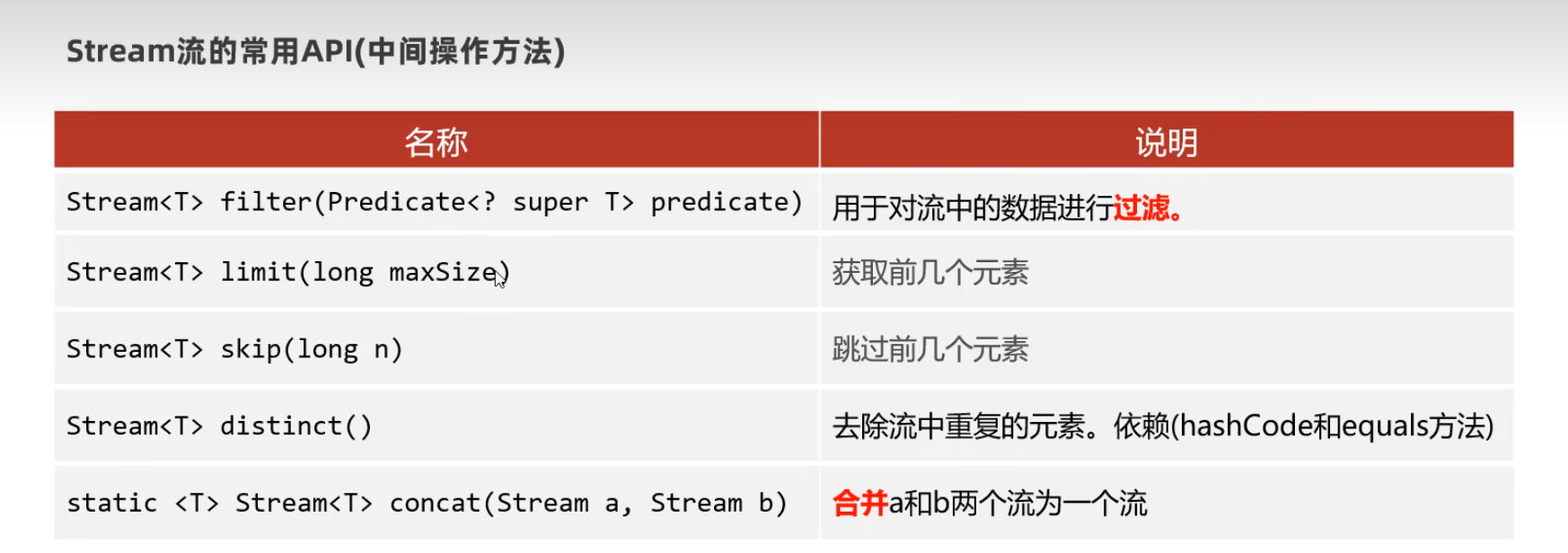函数式编程
注重函数 - 关注对数据进行了什么操作
流
中间操作


去重
authors.stream()
.distinct()
;
查询指定匹配
.filter(new Predicate<Author>() {
@Override
public boolean test(Author author) {
author.getAge() == 18;
}
})
Lambda优化=>
.filter(author -> author.getAge() == 18)
转换流当中的类型
.map
排序
不能有重复 - .sorted()
降序
空参 - 实现compareble接口
有参-
限制流的最大长度
limit -
跳过前n个元素, 返回剩下的元素
.skip
取出一个新的流 - 新类型
map只能把一个对象转换成另一个对象来作为流中的元素。而flatMap可以把一个对象转换成多个对象作为流中的元素。
.flatMap
终结操作
遍历
forEach(new Consumer<Author>() {
@Override
public void accept(Author author) {
System.out.println(author.getName());
}
});
Lambda优化=>
.forEach(author -> System.out.println(author.getName()))
获取当前流中的元素的个数
.cout
求流中的最大最小值
.max
.min
把当前流转换成一个集合
.collect(Collectors.toList)
.collect(Collectors.toSet)
.collect(Collectors.toMap(a->a.getKey, a->a.getValue))
查找与匹配
.anyMatch(匿名内部类- 判断条件)
.allMatch()
.findAny
.findFirst
归并
reduce
内部操作流程
